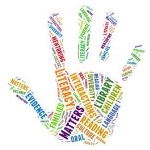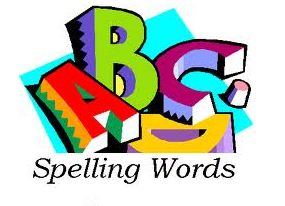Literacy Across The Curriculum

The need to read…
Literacy marking – what the teacher's marking means
The power of punctuation – explaining punctuation
Writing frames – writing a formal letter, informal letter, an article, a leaflet, a poster
Commonly misspelled words
Writing tips for people with dyslexia
Discover more great English resources at Primary Resources and BBC Skills Wise
|
Literacy table |
||
Choose your grammar wisely:
| there/their/they’re | to/too/two |
| were/we’re/where/wear | are/our |
| your/you’re | of/off |
| should of/could of/would of | should have/could have/would have |
Ten tips for talking about reading
- Set the scene: Before your child starts reading, talk about what it might be about, or what it might be trying to achieve, e.g. entertain, inform, persuade, etc. If it’s a novel, ask your child to start with the blurb, or recap what’s happened in the story so far.
- Talk about the title [or headline or catch-phrase]: e.g. What does it tell you about what you’re going to read? Does it make you want to read on, or put it down? If there are images or logos, Do these tell you anymore about the text?
- Work out new words: As your child starts reading, try not to interrupt, but if they get to a word they’re struggling with, or don’t know, you could suggest they break it down and look for parts of the word they recognise, e.g. football – foot/ball, or look it up?
- Pick out punctuation: Have a look for any interesting uses of punctuation and talk about what these add to the meaning, e.g. exclamation marks, ellipses…
- Images are just as important: Look at any pictures which accompany the text, these can be especially useful in articles, and can give lots of extra information, help your child to question them as they do the text, e.g. What’s happening here? Who’s in the picture? What’s the picture telling you?
- Study the sequence: Help your child to remember the events of a book in the right order – although this sounds very straight forward, it’s a really useful skill, and can just be prompted by questions like, And then what happened?
- Pull apart the plot: Once your child’s finished reading, ask them questions about the plot, e.g. Why do you think that happened? What’s the importance of that event? Why is that happening? As well as how they feel about it, e.g. Is it believable? Is this bit exciting or boring?
- Chat about the characters: Talk about the characters, and ask your child what they think about the people, e.g. Why do you think she/he did that? How do you think that make X feel? Would you ever do anything like that?
- Learn new language: Have a look at any interesting new words, or the way words are used, for instance rhyming words in poems or any descriptive passages.
- Talk about text types: Look at the different features of the text, for example, slogans, instructions, articles etc. and try to talk about how the text is presented, e.g. bullet points, headings and shorter paragraphs in articles; short, clear sentences in instructions, etc.
Recommended Reading Lists:
Please see our Library page for links to our current recommended reading lists:

